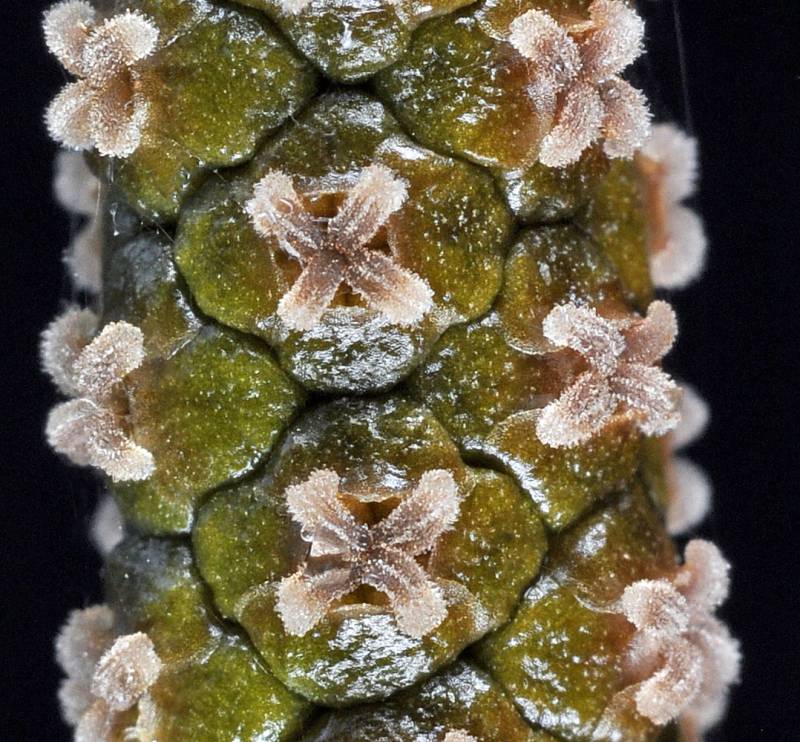Potamogeton pulcher
Potamogeton amplifolius
broad-leaved pondweed, large-leaved pondweed
Leaves alternate, the submersed leaves short-petiolate, the upper ones 8-20 cm. long and 2-5 cm. broad, acute at both ends, folded, and sickle-shaped in outline, 25- to 45-nerved; floating leaves with long, stout petioles, the blades leathery, ovate to ovate-elliptic, acute or rounded at the base, 5-10 cm long and 2-4 cm. broad;
stipules to 10 cm. long, free of the petiole.
Flowers perfect, in densely-flowered spikes on peduncles 7-15 cm. long;
perianth of 4 clawed segments, each with an upturned, oval blade;
stamens 4, fused with the claws;
pistils 4, sessile.
Achenes obliquely ovoid, 4-5 mm. long, with a sharp dorsal keel and 2 lateral keels.
Potamogeton pulcher
Potamogeton amplifolius
- Local floras:
BC,
CA,
OR,
WA
- Local Web sites:
CalFlora,
CalPhotos,
Flora NW,
PNW Herbaria
WildflowerSearch
iNaturalist (observations)
USDA Plants Database
- LBJ Wildflower Center
- SEINet
- Plants of the World Online
- Encyclopedia of Life
- Wikipedia
- Google Image Search


